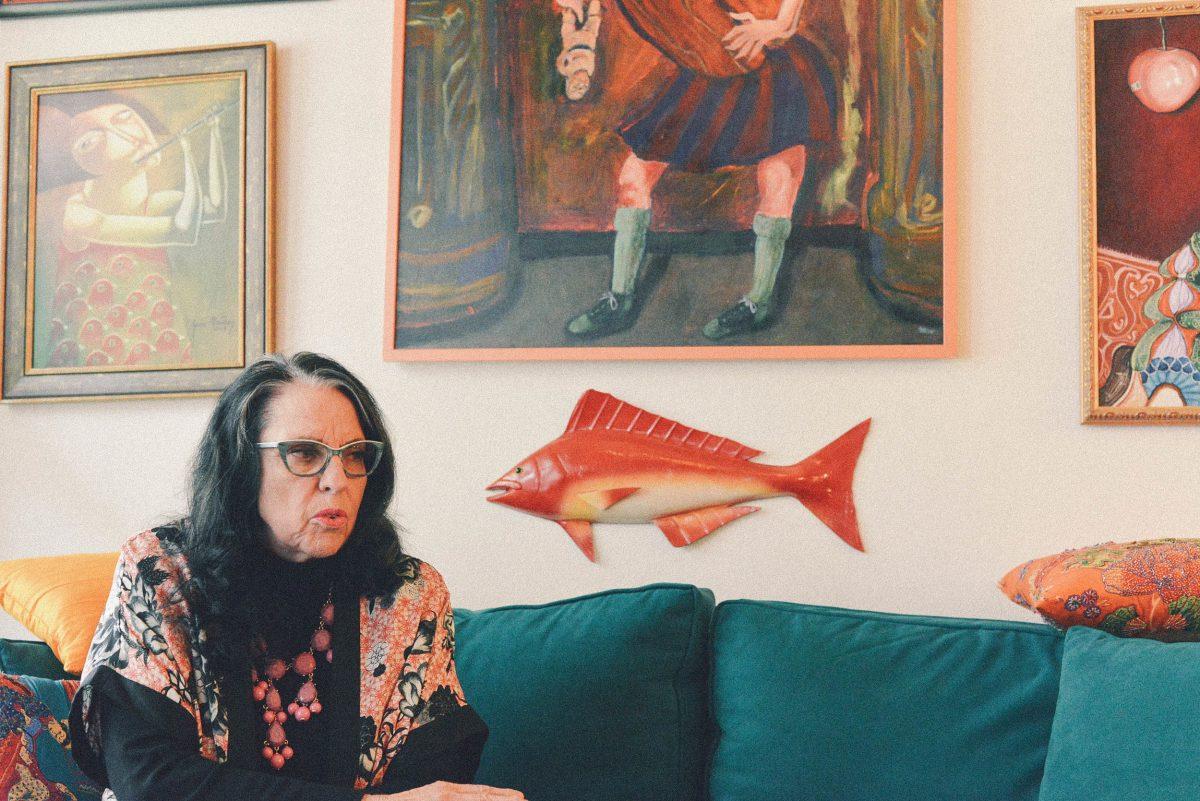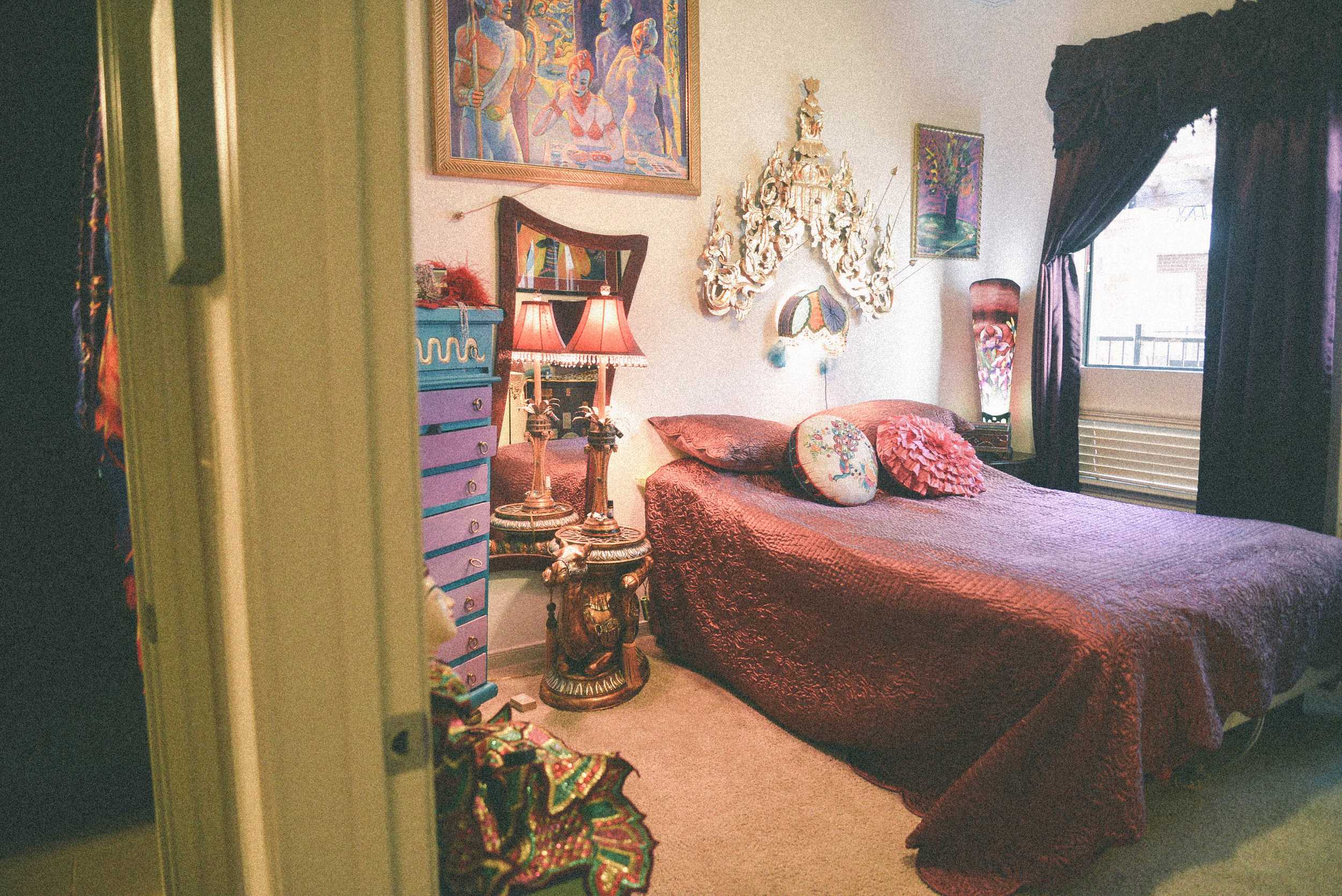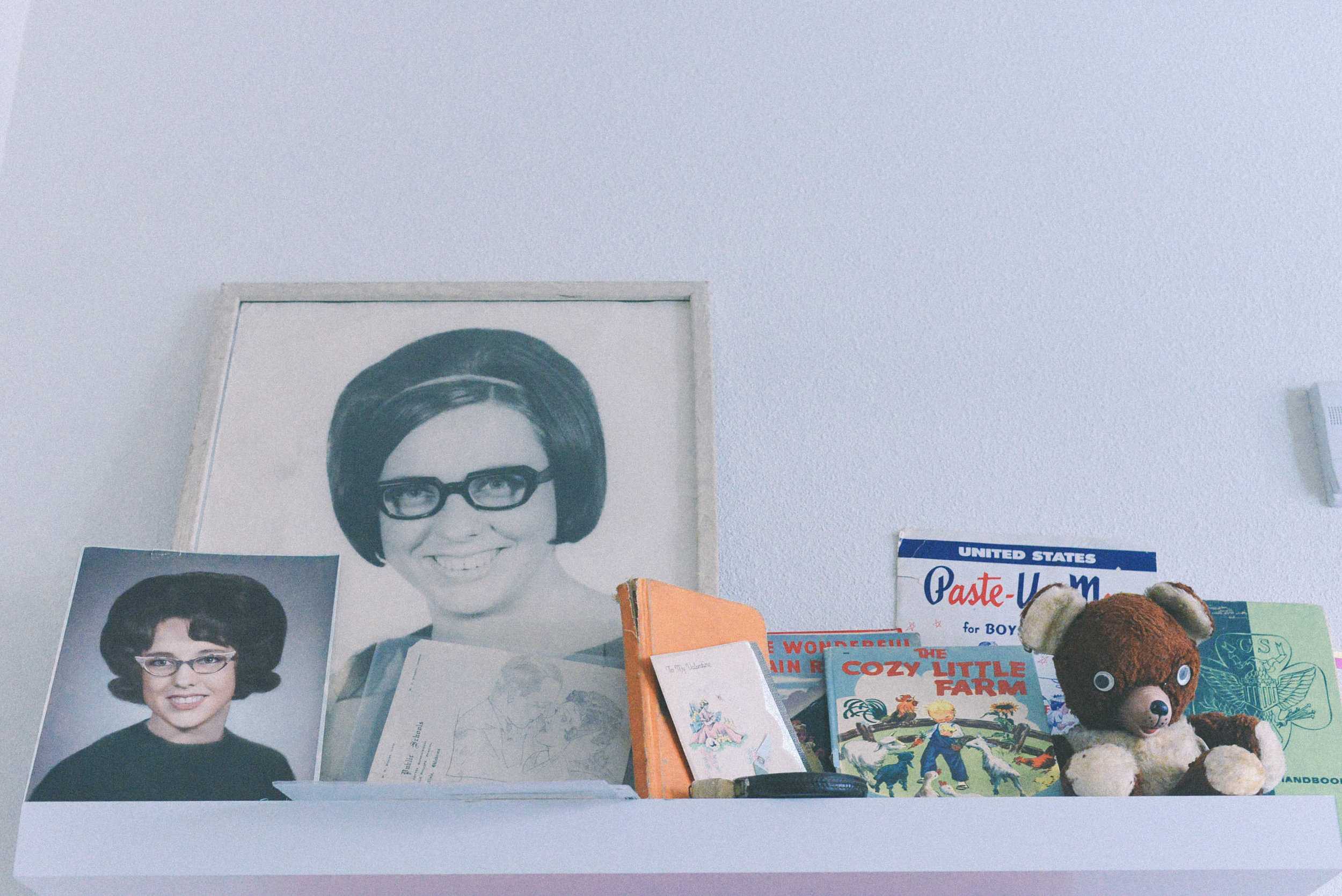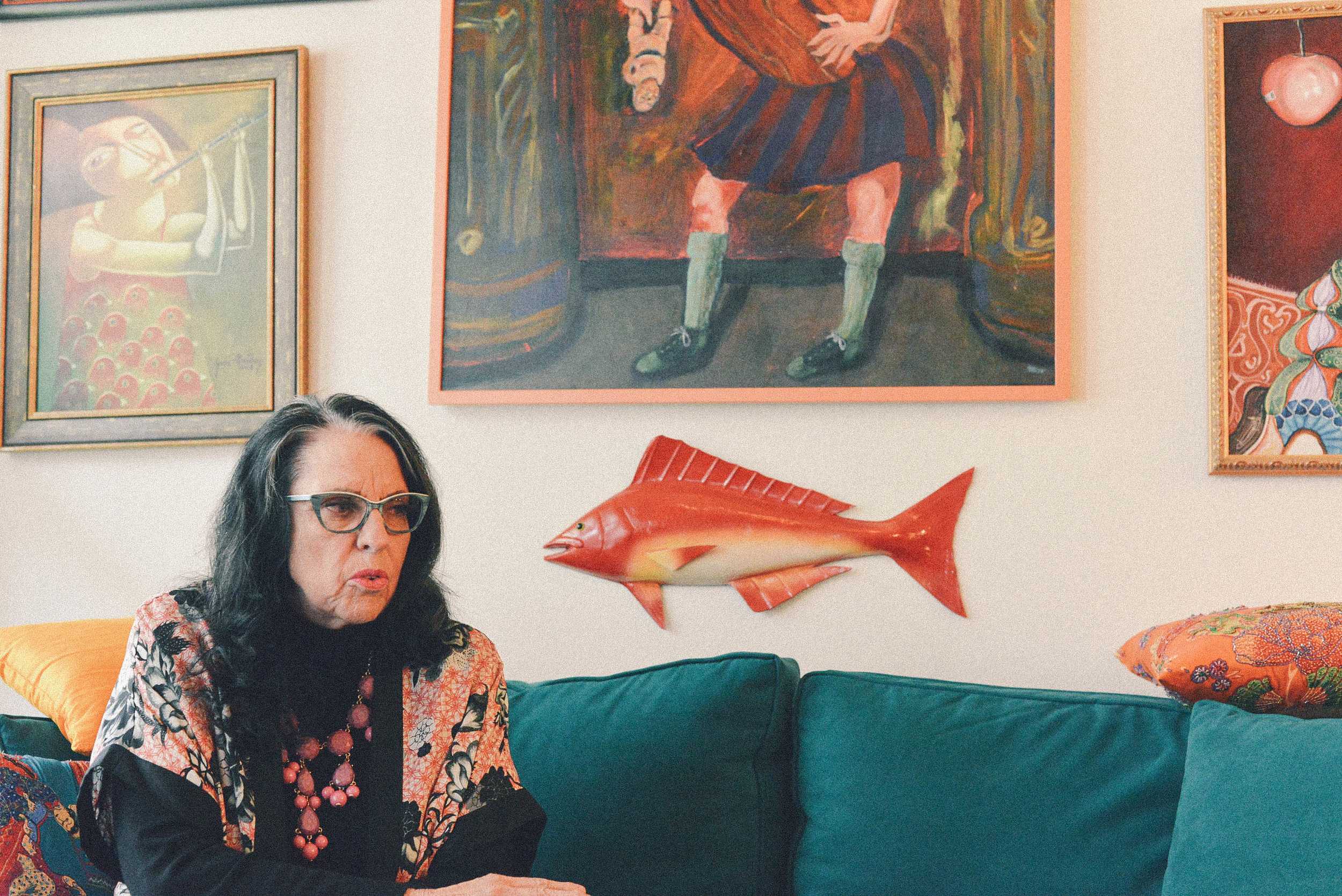Editor’s Note: This story originally appeared in Digital Issue V.
Her ass enters the room before the rest of her. She wears a bleach blonde wig and a tight-fitting corset, gabbing at 100 miles per minute with every friend and stranger alike at the big premiere. At 70 years old, Aralyn Hughes is still the center of attention, and she’s proud of it.
Story by Lauren L’Amie and Dahlia Dandashi
Photos by Dahlia Dandashi
Hughes lived in the iconic “Keep Austin Weird” house for 27 years before moving to her new apartment, which still shows off her quirky decor.
As Austin’s own “Queen of Weird,” Hughes’ latest endeavor is as the subject of a new documentary, “Love in the Sixties,” which chronicles her journey from housewife to dominatrix to performer and everything in between.
If longtime Austinites cannot recall Hughes, they certainly know where she used to live — she and her beloved pet pig occupied the iconic “Keep Austin Weird” house off MoPac for 27 years.
Today, Hughes’s bright Riverside apartment serves as a personal gallery. She is a self-employed curator of all things eclectic. The shelves in her living room are lined with lace doilies, displaying small quirky figurines alongside feather boas and handcuffs. A small statue of a clown she calls Bozo stands upright in a corner. Paintings cover the walls, ceilings and doors — some her own, some painted by friends or past lovers. “Oh, that one is from my Cuban boyfriend,” she says, gesturing toward a surreal green-ish painting above a doorframe. “Everyone always points out the ones I didn’t do.”
For Hughes, every object has a story.
An old photograph of Hughes sits like a shrine in her office space. It is of a younger Hughes, hair coiffed in a typical ‘50s style, a pair of cat-eye glasses resting on her nose. She looks, by all outdated beauty standards, normal. Hughes grew up in rural Oklahoma, studied home economics in college and became a Navy wife by her late 20s. The woman displayed in the old photograph, Hughes says, is an important part of her story. “I didn’t know any other options other than to be a wife, mother, homemaker,” Hughes says. “I was all set to do the whole thing. I got married and divorced at 30, and I said I’d never get married again because I just didn’t want to be in that institution. There was all this jealousy and fear and possession and loss, and it didn’t work for me.”
Born in rural Oklahoma, Hughes married and studied home economics before becoming Austin’s “Queen of Weird.”
Hughes’ most recent book, “Kid Me Not,” is an anthology of essays by “child-free women of the 60s now in their 60s,” chronicling their experiences with motherhood, womanhood and the decision not to have children. “There are now a lot of women who don’t want to get married, don’t want to have children,” Hughes says. “We were the forerunners of that; we were the ones who went against the grain. We were the ones who got all the, ‘You’re gonna be sorry,’ ‘Don’t you want to leave a legacy?’ or ‘You’re just being selfish.’”
In February, Hughes’s long time confidante and close friend, Amparo Garcia-Crow, released a behind-the-scenes feature biography to celebrate Hughes’s illustrious life journeys. “Love in the Sixties” captures the past, present and future of Hughes through personal anecdotes, memorable experiences and thought-provoking reflections.
The film is composed entirely of supplemental footage Garcia-Crowe collected of Hughes throughout their friendship. The story contextualizes her in a process of self-actualization, while confronting issues like societal expectations, aging in a technology-advancing world and, most prominently, her concept of feminism.
“I think that people make a conscious choice of whether to change and go forward or to put on the brakes and stop right there,” Hughes says. “They don’t change their hairdo, they don’t change their style of dress, they don’t wanna learn anything new. They don’t really want to move forward too much. I just saw, if I don’t keep up with technology, I’m just going to be out.”
Love in the Sixties is a new documentary that chronicles Aralyn Hughes’ legacy in Austin, from her days as a real estate agent and dominatrix to the success of her one-woman shows.
Hughes has always been a progressive figure, serving as director of Texas’s first abortion clinic and subsequently lobbying for the Roe v. Wade ruling in the ‘70s. A steadfast luminary for women’s rights, she believes the “open” culture she helped shape in the ‘60s is slowly reversing and coming to a halt. “We [women] still have so many difficulties in relationships, related to sexuality and love and intimacy,” Hughes says. “I also think many of the people that are holding us back and that are fighting for women’s choice in reproductive rights are going to be dead and gone in the next 20 years, and it’ll be interesting to see what is going to happen.”
Many see the documentary as Hughes placing monumental bookends on her life, but Hughes explains that she is ever-evolving, with the film simply representing the latest milestone rather than a finite goodbye. “Even since that film was completed, I have gone in different directions in terms of my beliefs, in terms of getting over shame about things, fear about things,” Hughes says. “I just keep moving forward, and I can see it by watching that film.”
Hughes says that she cannot foresee who she will wake up as tomorrow, but she knows her focus is on becoming a crone — or in her words, “a wise woman of the tribe.” Fear of death is off the table, and instead, dying is seen as just another chapter in the Queen’s indelible life story.
“I might be doing something really interesting when I die, we’ll see. It’s probably going to be my final performance art piece.”














































